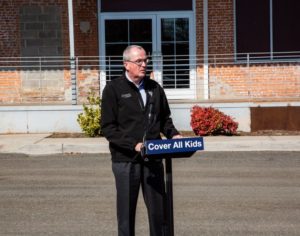You know that education reform is a peculiar animal when writers from the left-leaning Blue Jersey and a school voucher supporter in the Los Angeles Times agree on something.
Over at Blue Jersey, a staff writer describes the growing appeal to local districts of NJ’s Interdistrict Public School Choice Program, where school boards can vote to open empty seats to students outside of district boundaries. Recent reports (see this update from the Press of Atlantic City) put the total number of “choice districts” up this year to 107, from last year’s 71 (or so). That’s an additional 2,787 seats for kids and families who are stuck in lower-performing schools.
But, points out Blue Jersey, most of these new volunteer districts are “older suburbs,” not the top-performing schools. And that’s because, the writer charges, “each district has to make a choice: what is worth more to them, the extra cash the program brings, or the “value” of excluding lower-income kids, predominantly of color, from their schools.”
To some, sad to say, the value of exclusion beats the value of the revenue garnered from out-of-district tuition. Pay more for homogeneity? No problem.
In the LA Times piece, Jonathan Zimmerman makes the case that Gov. Romney’s platform is unmatched in progressiveness because the candidate is pushing for school vouchers that could be used not only in private and parochial schools, but also in other public schools.
And that, in turn, would take on the true sacred cow in American education: local control. Tomorrow, I can drive to your hometown and access a vast array of public services: roads, parks, police and more. But if I try to enroll my children in your public schools, I’ll probably be turned away. Yes, underenrolled districts occasionally issue permits that allow in a few kids from elsewhere. But in general, schools have been closed to all except those whose property taxes go to fund them.
Never mind that those property taxes also fund the parks and other amenities that I can use. And forget all our effusive rhetoric about education as the great equalizer, the ticket out of poverty and so on. American education is profoundly unequal because it is still circumscribed by local district lines — and still financed, mostly, by local tax dollars.
Both writers nail it, making the same point from starkly different political perspectives.


